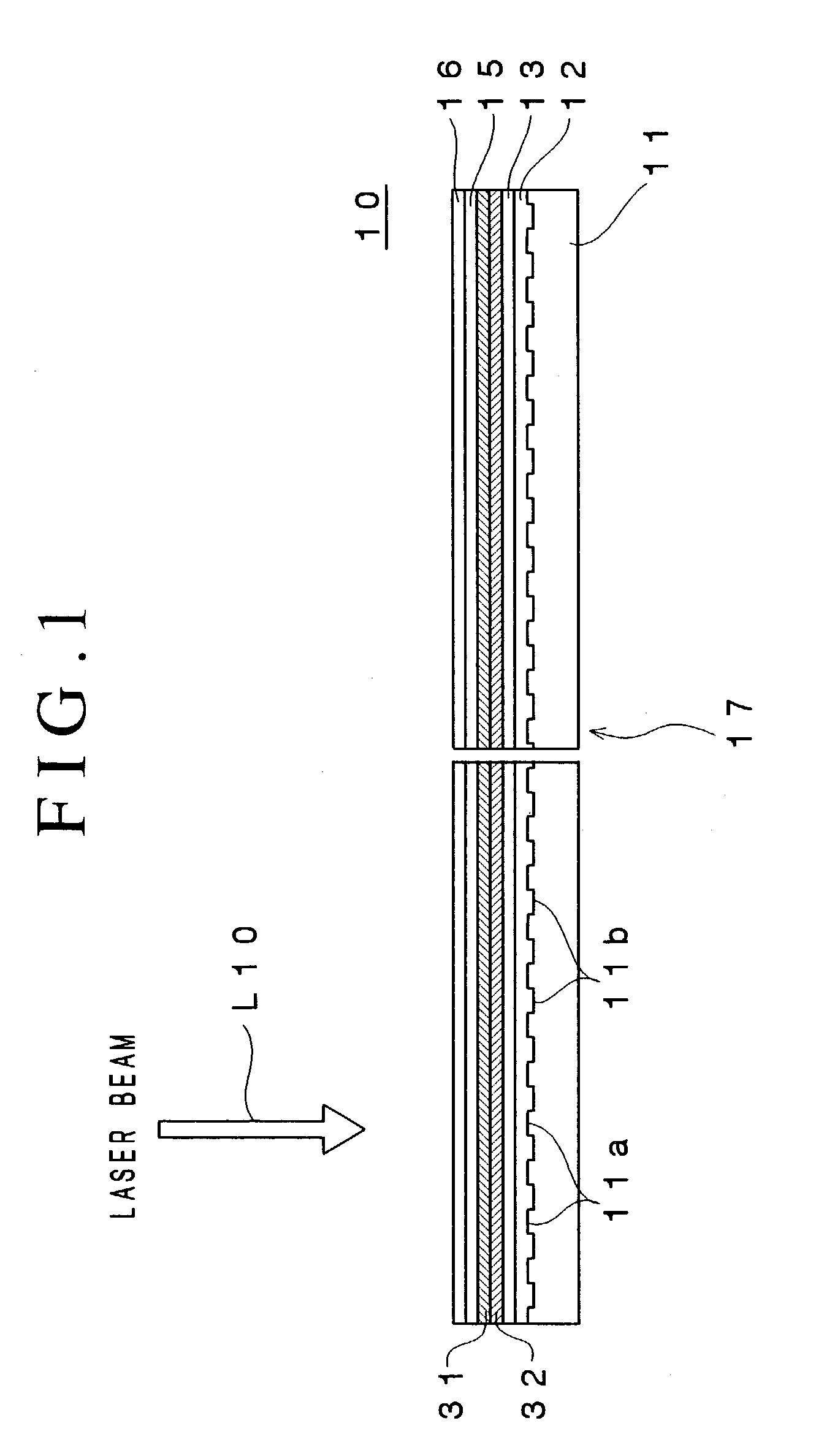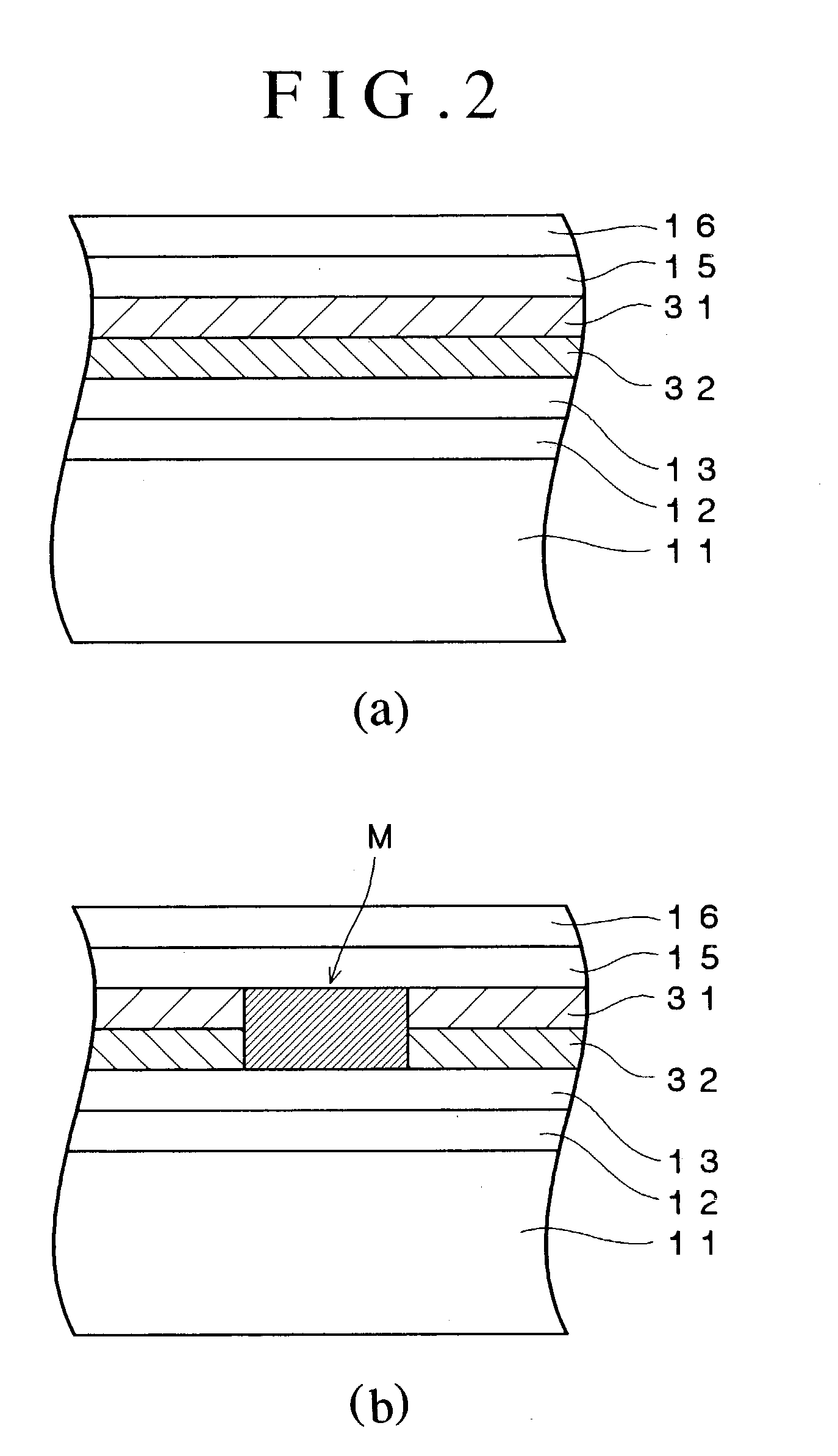Optical recording medium and method for optically recording data in the same
a recording medium and optical recording technology, applied in optical recording/reproducing/erasing methods, mechanical recording, instruments, etc., can solve the problems of laser beams affecting the surface of the second recording layer, difficult to form a layer, and difficult to improve long-time storage reliability
- Summary
- Abstract
- Description
- Claims
- Application Information
AI Technical Summary
Benefits of technology
Problems solved by technology
Method used
Image
Examples
working example 1
[0121] An optical recording medium was fabricated in the following manner.
[0122] A polycarbonate substrate having a thickness of 1.1 mm and a diameter of 120 mm was first set on a sputtering apparatus. Then, a second dielectric layer containing a mixture of ZnS and SiO.sub.2 and having a thickness of 60 nm, a second recording layer containing Cu as a primary component and having a thickness of 6 nm, a first recording layer containing Si as a primary component and having a thickness of 6 nm and a first dielectric layer containing the mixture of ZnS and SiO.sub.2 and having a thickness of 60 nm were sequentially formed on the polycarbonate substrate using the sputtering process.
[0123] The mole ratio of ZnS to SiO.sub.2 in the mixture of ZnS and SiO.sub.2 contained in the first dielectric layer and the second dielectric layer was 80:20.
[0124] Further, the first dielectric layer was coated using the spin coating method with a resin solution prepared by dissolving acrylic ultraviolet ray...
working example 2
[0125] An optical recording medium was fabricated in the manner of Working Example 1, except that a first recording layer containing Ge as the primary component was formed.
working example 3
[0126] An optical recording medium was fabricated in the manner of Working Example 1, except that a first recording layer containing C as the primary component was formed.
PUM
| Property | Measurement | Unit |
|---|---|---|
| total thickness | aaaaa | aaaaa |
| total thickness | aaaaa | aaaaa |
| total thickness | aaaaa | aaaaa |
Abstract
Description
Claims
Application Information
 Login to View More
Login to View More - R&D
- Intellectual Property
- Life Sciences
- Materials
- Tech Scout
- Unparalleled Data Quality
- Higher Quality Content
- 60% Fewer Hallucinations
Browse by: Latest US Patents, China's latest patents, Technical Efficacy Thesaurus, Application Domain, Technology Topic, Popular Technical Reports.
© 2025 PatSnap. All rights reserved.Legal|Privacy policy|Modern Slavery Act Transparency Statement|Sitemap|About US| Contact US: help@patsnap.com



